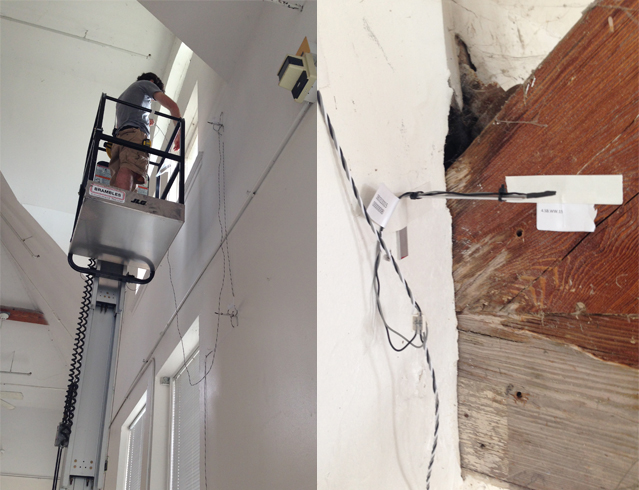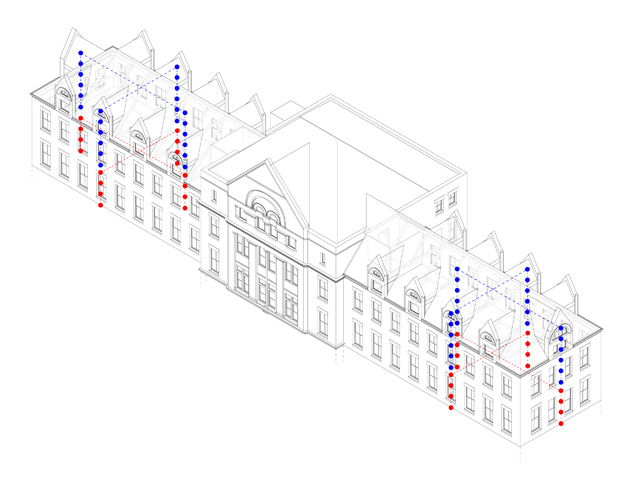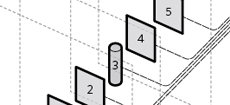Monitoring for Better Design at Tulane
We installed sensors within the walls of Tulane's Richardson Memorial Hall to measure temperature stratification in space. Ambient temperature measurements will provide designers with data to inform systems design.
For a renovation project at Tulane University's School of Architecture, KieranTimberlake recently installed temperature sensors at more than 150 points within the building. This monitoring exercise will allow us to gain a nuanced understanding of the building's thermal performance within the predominantly hot, humid climate of New Orleans. Measurements will be used to analyze how temperatures vary within the building, which will inform the design of new passive and active heating and cooling systems. The goal is to the generate a design that responds to the unique thermal context of the building, creating the most comfortable environment possible while using the least amount of energy.
The design team devised a package of temperature monitoring equipment for deployment at several locations on the third and fourth floors of Richardson Memorial Hall, home to the architecture school. The third and fourth floors contain studio spaces in the north and south wings of the building. On the fourth floor, the ceilings are double-height, with a pitched roof rising more than 30 feet. Nearly all of the windows in the building are uninsulated. The sensor deployment is focused on creating rich data sets for ambient temperature distribution as well as thermal stratification (change in temperature from one zone to another) within the building. This is coupled with envelope monitoring on both the interior and exterior walls.
Sensors were placed at more than 150 points within the building.
The temperature data generated by the sensors is transmitted to a central gateway and from there to the cloud via a cellular module. This process allows all data, which is collected at 15-minute intervals, to be viewable in real time via a web interface. Members of the design team—including local architect Eskew+Dumez+Ripple and consulting engineers Buro Happold—have ready access to the information to facilitate early design planning. Earlier this month, the data was used in a workshop led by KieranTimberlake at the School of Architecture; students were asked to examine sensor data and predict the effect on room temperature of opening windows for 45 minutes.

A web interface makes temperature data (in degrees Celsius) collected by the sensors available to the design team in real time.
Data is used to generate such models as this visualization of Mean Radiant Temperature (MRT) within the studio spaces at Richardson Memorial Hall. It shows the different MRT a person would experience within the space, with red tones corresponding to warm temperatures and blues corresponding to cool.
As the design process advances, information will continue to be collected and applied. To date, the sensor data has been used to generate visualizations of Mean Radiant Temperature (MRT) within the building's studio spaces. What humans experience as thermal comfort is related to both air temperature and temperature of interior surfaces within a building; MRT is the result of a person's exposure to adjacent thermal surfaces and the angle of that exposure. It is a key driver for occupant thermal comfort and allows the design team to identify the presence of thermal asymmetries that will be addressed through the renovation process.








